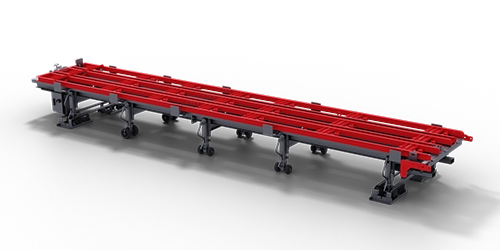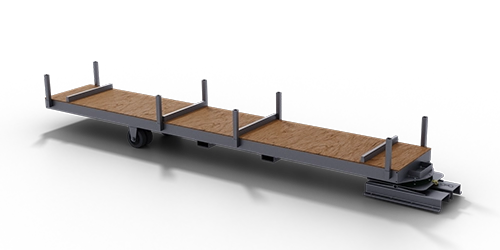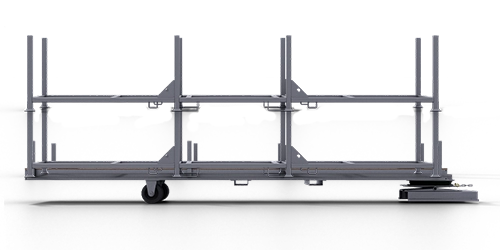Intra-logistics is a field with immense potential for any manufacturing company. Starting at incoming materials for production, storage, transport to the production location right up to preparations for shipment to the customer. Right from the start of industrialisation the processes as such were no different to today’s.
However, the start of increasing globalised goods flows in the middle of the 1950s meant that each individual link in the process chain started its own research and improvements. Nowadays, having up-to-date intra-logistics means a decisive advantage over the competition because savings are made immediately – for example through a noticeable increase in productivity or reduced warehousing costs thanks to increased flexibility.
This means that trends in intra-logistics aren’t simply short-term trends, but guides to safeguarding the future.
Trend 1: Increasing automation in warehousing
The growth rates in the online mail order business are exploding, good workers are increasingly hard to find and are being desperately sought after!
In terms of automation the important thing in the first stage is to fill the gaps, and the second stage is to deploy people in places where they can contribute considerably more to added value with qualified actions.
2019 could therefore become the year in which robots come of age in warehousing and become esteemed „colleague robot“.
Trend 2: Digitalisation
Innovations such as the barcode made logistics a pioneer of digitalisation years before this keyword became a driver of new developments right across the sector.
Interesting new solutions put flexibility in the foreground above everything else. Uncertainty is growing in many markets, the Brexit is spectacularly showing how a political event can upend supply chain management systems which have been practised for years.
This means that new software solutions make it possible to run through what-if scenarios without actually having to move an HGV anywhere at all.
Tailor-made Cloud solutions control worldwide material flows more efficiently than ever before. Networking of companies will therefore continue to grow.
Trend 3: Networking:A Proof of Concept from SIMPLY. Container Filler
Networking as a partial area of digitalisation comprises direct and automatic control of warehousing or automatic warehousing systems.
However, these trends also only represent a reduced overview. Despite this the initial conclusion could be that classical hardware in the intra-logistics branch can only set limited impulses.
This is possibly due to the fact that heavy equipment for materials handling and container loading firstly cannot be replaced and secondly only provides relatively little potential for improvement. Irrespective of what materials industrial trucks are made of and what drives they use: the forks will remain.
This way of looking at things is, however, wrong. The best proof of this is of course the SIMPLY. Container filler.
The SIMPLY. container filler is not the only one on the market, but it’s the only one that offers mobility, economic efficiency, flexibility and safety in the field of loading heavy and bulky goods into a container.
If robots and clouds ensure that more and more goods have to be loaded even more quickly, SIMPLY. shortens the turnover times considerably: It only takes 10 minutes for the pallet to be run into the container with its cargo.
If workers are becoming more and more valuable, SIMPLY. demonstrates best how to save on them effectively. No more workers are required in the container, and they don’t have to subject themselves to risks which no longer exist if the SIMPLY. is used!
If modern materials handling and supply chain management require flexibility, then it really is an advantage that the motto with SIMPLY. is: „Load your container in front of the container“. The cargo can be pre-commissioned in peace and quiet a long time before the HGV arrives.
SIMPLY. also proves itself as a global method of choice when you don’t just have to load containers but also unload them. It can even be used on project construction sites and also saves heavy equipment and time in this case, and also contributes to safety.
And this is how we come to our second conclusion: intra-logistics is not just determined by trends, but also by solutions which work immediately. Tangibly, pragmatically and sustainably.






